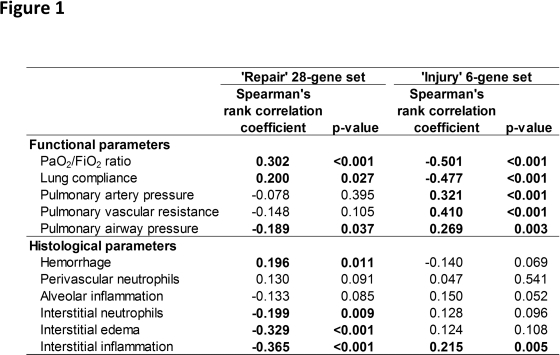Time and Perfusate Dependent Molecular Response in Ex Vivo Lung Perfusion
1Department of Laboratory Medicine and Pathology, University of Alberta, Edmonton, Canada
2Department of Surgery (Cardiac), University of Alberta, Edmonton, Canada.
Meeting: 2018 American Transplant Congress
Abstract number: A35
Keywords: Gene expression, Lung preservation, Lung transplantation, Machine preservation
Session Information
Session Name: Poster Session A: Biomarkers, Immune Monitoring and Outcomes
Session Type: Poster Session
Date: Saturday, June 2, 2018
Session Time: 5:30pm-7:30pm
 Presentation Time: 5:30pm-7:30pm
Presentation Time: 5:30pm-7:30pm
Location: Hall 4EF
Lung transplantation has limited organ utilization and high rates of primary graft dysfunction, in part due to acute lung injury (ALI). Cold static preservation (CSP) aims to minimize ALI but is limited by short preservation periods and an inability to assess organ quality. Ex vivo lung perfusion (EVLP) is a promising alternative that may allow for injury assessment and repair; however the molecular mechanisms are unclear. This study aims to explore if EVLP produces a quantifiable ALI gene response.
Swine lungs were preserved with CSP (n=11) or EVLP (n=57) for 12hrs. EVLP lungs were perfused with acellular solution (AC), packed red blood cells (pRBCs) or whole blood (WB) and ventilated with either positive or negative pressure. Biopsies were taken in vivo (n=25) and after 0 (n=68), 6 (n=8) and 12 (n=68) hours. Standard functional and histologic parameters were assessed. NanoString was used to quantify 48 previously described ALI genes.
28 “repair” genes were significantly upregulated and 6 “injury” genes were significantly downregulated after 12 hours of EVLP. Repair and injury gene sets correlated with functional and histologic parameters (Figure 1). Differences in gene set expression were seen with EVLP (p<0.001) but not CSP (p>0.05). Repair gene set expression was increased at 6hrs (p<0.001) without further increase at 12hrs (p>0.05). In contrast, injury gene set expression was lower at 12 (p<0.001) but not 6 hours (p>0.05). pRBCs and WB perfusates showed greater injury gene set reduction compared to AC (p=0.008 and p=0.038, respectively). There was no difference in repair gene set expression between perfusates and no difference in either gene set between ventilation strategies (p>0.05).
EVLP alters the molecular phenotype in a manner that is quantifiable, time and perfusate dependent, and correlates with histologic and functional parameters. Gene expression may provide a more precise, objective and mechanistic approach for assessing and monitoring donor lungs.
CITATION INFORMATION: Dromparis P., Aboelnazar N., Wagner S., Himmat S., White C., Luc J., Freed D., Nagendran J., Mengel M., Adam B. Time and Perfusate Dependent Molecular Response in Ex Vivo Lung Perfusion Am J Transplant. 2017;17 (suppl 3).
To cite this abstract in AMA style:
Dromparis P, Aboelnazar N, Wagner S, Himmat S, White C, Luc J, Freed D, Nagendran J, Mengel M, Adam B. Time and Perfusate Dependent Molecular Response in Ex Vivo Lung Perfusion [abstract]. https://atcmeetingabstracts.com/abstract/time-and-perfusate-dependent-molecular-response-in-ex-vivo-lung-perfusion/. Accessed December 20, 2025.« Back to 2018 American Transplant Congress

